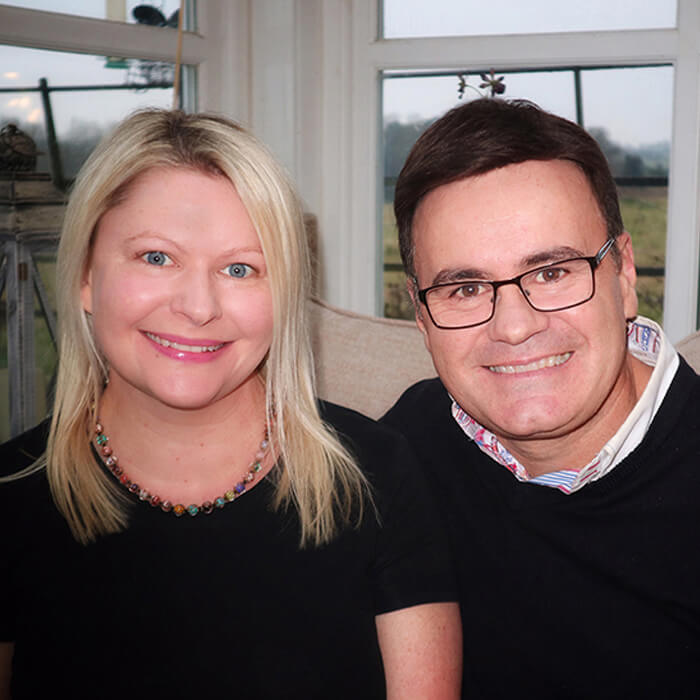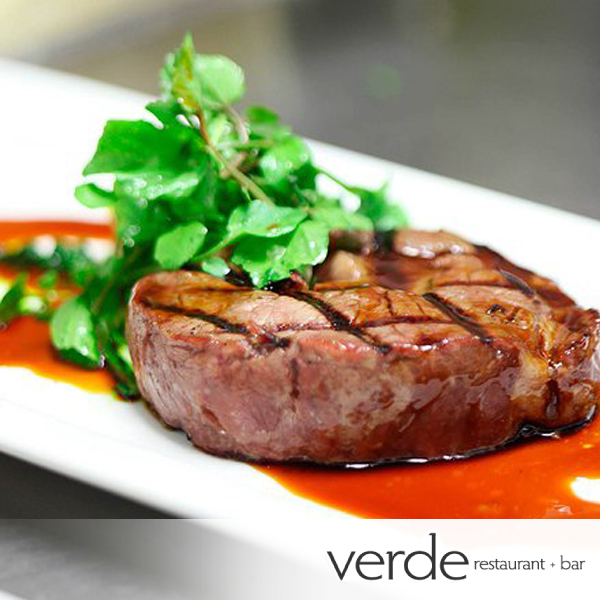
by Sarah Blinco | Jan 22, 2014 | Asia-Pacific, Travel blogger destinations
Verde Restaurant Sydney delicious Italian
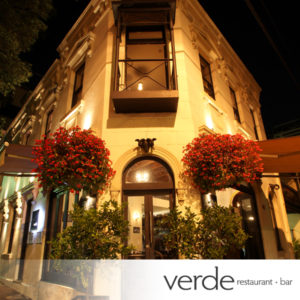 The last time I was in Sydney I mentioned on Facebook that I’d enjoyed the best meal of my life. A number of people have since asked if I was joking, but actually no, I was totally serious.
The last time I was in Sydney I mentioned on Facebook that I’d enjoyed the best meal of my life. A number of people have since asked if I was joking, but actually no, I was totally serious.
On a mission to discover a Sydney beyond the tourist traps, Cooper and I found ourselves wandering just under ten minutes from our Potts Point accommodation (or King’s Cross station as a landmark) to a suburban restaurant surrounded by beautiful tree lined streets and swimming with aromas of Italy.
Our noses led us to Verde Restaurant & Bar, recent winner of three prestigious Chef’s Hats. As the sun set across the city, we wandered into this very elegant, intimate establishment – a stunning, heritage listed Victorian building, situated on the corner of Stanley and 115 Riley Street within an area renowned as being East Sydney’s ‘Little Italy’.
Our usual dining routine is this: Take a seat, choose a main, perhaps an entrée if really hungry – both of which would be dishes familiar to us; scoff meal, leave full and with any luck, feel generally satisfied.
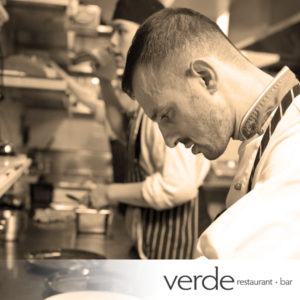 At Verde Restaurant Sydney however, because we had arrived just prior to the evening rush, we had the pleasure of chatting to Antonio Ruggerino, owner and head chef (pictured below), who insisted we try it his way. Antonio is one of those truly passionate Italians who is as enthusiastic about food as he is knowledgeable.
At Verde Restaurant Sydney however, because we had arrived just prior to the evening rush, we had the pleasure of chatting to Antonio Ruggerino, owner and head chef (pictured below), who insisted we try it his way. Antonio is one of those truly passionate Italians who is as enthusiastic about food as he is knowledgeable.
He’s worked for a variety of excellent restaurants all over the world, but told us his real inspiration stemmed from a love of hanging out – watching and learning – in the family kitchen as a child. Antonio’s always loved food, and was smart enough to follow this passion into an adult career.
And how could we resist anyone who said to us he wanted to “Feed us like we’re true Italian family”? Deal.
So began our foray into tasting smaller portions of a wide variety of dishes (entrées, mains and desserts) featured on the Verde menu rather than one or two larger items resulting in our usual predictable outcome.
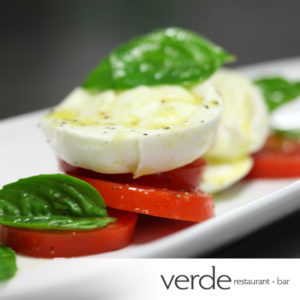 As we enjoyed a divine glass of sparkling wine, we eagerly anticipated what would emerge first. A large plate brimming with samples predominantly from the entrée menu appeared in no time. Take a look at the menu HERE, and as your mouth waters, let me assure you these taste even better than they sound.
As we enjoyed a divine glass of sparkling wine, we eagerly anticipated what would emerge first. A large plate brimming with samples predominantly from the entrée menu appeared in no time. Take a look at the menu HERE, and as your mouth waters, let me assure you these taste even better than they sound.
The Zucchini flowers filled with ricotta and spinach are divine, and the chilli dusted calamari melts in your mouth. We tried about ten different items however, and each offered a taste phenomenon that had us longing for more in between expressions like, “wow”, “how did he do that” and “that’s sooo good”.
One thing we loved about Antonio’s food is that it wasn’t overdone. It’s not ‘too fancy’ – it’s actually quite simple cuisine but tasty and perfectly prepared, cooked and matched with complementary ingredients.
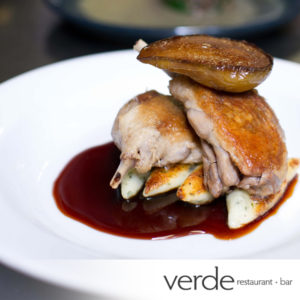 Then came a round of options from the mains menu. The Gnocchi (home made), Mozzarella di Buffalo, parsley, Tomato Sugo was to die for – a delicious explosion of tomato and cheese flavours and alluring textures. I had to be restrained from licking my plate. We also tried Confit of Duck Leg with herb Gnocchi, Caramelised Balsamic Pear which to our absolute shock, we loved. We’re not really big fans of duck, but this meat was tender and not gamey at all, and the pear’s sweetness was a perfect accompaniment to the other flavours emanating from this course. Like everything he gave us, this was plate-lickingly good!
Then came a round of options from the mains menu. The Gnocchi (home made), Mozzarella di Buffalo, parsley, Tomato Sugo was to die for – a delicious explosion of tomato and cheese flavours and alluring textures. I had to be restrained from licking my plate. We also tried Confit of Duck Leg with herb Gnocchi, Caramelised Balsamic Pear which to our absolute shock, we loved. We’re not really big fans of duck, but this meat was tender and not gamey at all, and the pear’s sweetness was a perfect accompaniment to the other flavours emanating from this course. Like everything he gave us, this was plate-lickingly good!
We continued to indulge in whatever came our way, and our eyes grew wide with glee when a plate of dessert treats emerged, my favourite being the Crumble Apple & Cinnamon with Caramelised Almonds and Vanilla Gelato. OMG! I was so enamoured of this dish that I only scraped a mouthful or two of other sweet delights that Cooper had quickly devoured while I wasn’t paying attention.
The entire meal wasn’t a meal, but a culinary experience. We tried food we would never have ordered therefore we enjoyed encountering something new! And we left feeling entirely satisfied but not sickly full. It seems Antonio really does know his stuff, not just flavours that will suit one’s mood or even the weather outside, but he understands portions too.
It’s about the experience
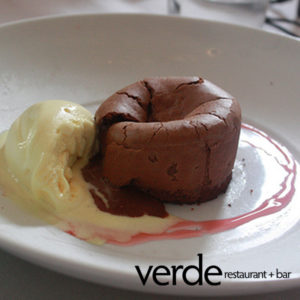 The reason this all came about, is because Antonio prides himself on being a master of selecting cuisine he instinctively knows diners will love, but that we wouldn’t order for ourselves. It’s disappointing to him that people miss out on these kinds of experiences, so much so he is now encouraging diners to let he and his team take charge. Don’t worry about decision making – entrust your experience to him, and for a fraction of the price of a traditional degustation menu, anyone can put Antonio’s skills to the test – and you really should, because we bet you’ll be surprised and delighted every time. Drop into Verde, tell Antonio what you or any of your party don’t eat, and he’ll then serve you the best meal of your life. Simple and delicious.
The reason this all came about, is because Antonio prides himself on being a master of selecting cuisine he instinctively knows diners will love, but that we wouldn’t order for ourselves. It’s disappointing to him that people miss out on these kinds of experiences, so much so he is now encouraging diners to let he and his team take charge. Don’t worry about decision making – entrust your experience to him, and for a fraction of the price of a traditional degustation menu, anyone can put Antonio’s skills to the test – and you really should, because we bet you’ll be surprised and delighted every time. Drop into Verde, tell Antonio what you or any of your party don’t eat, and he’ll then serve you the best meal of your life. Simple and delicious.
If you’re seeking an authentic Sydney experience and a quality place to dine where Antonio serves up his very own perfect, traditional southern Italian family recipes, we’d encourage you to try Verde. It’s just lovely! There’s a marble bar too, and an extensive wine list; private areas for functions, and many cosy options for you, friends, family and colleagues.
Buon Appetito!
Sarah Blinco
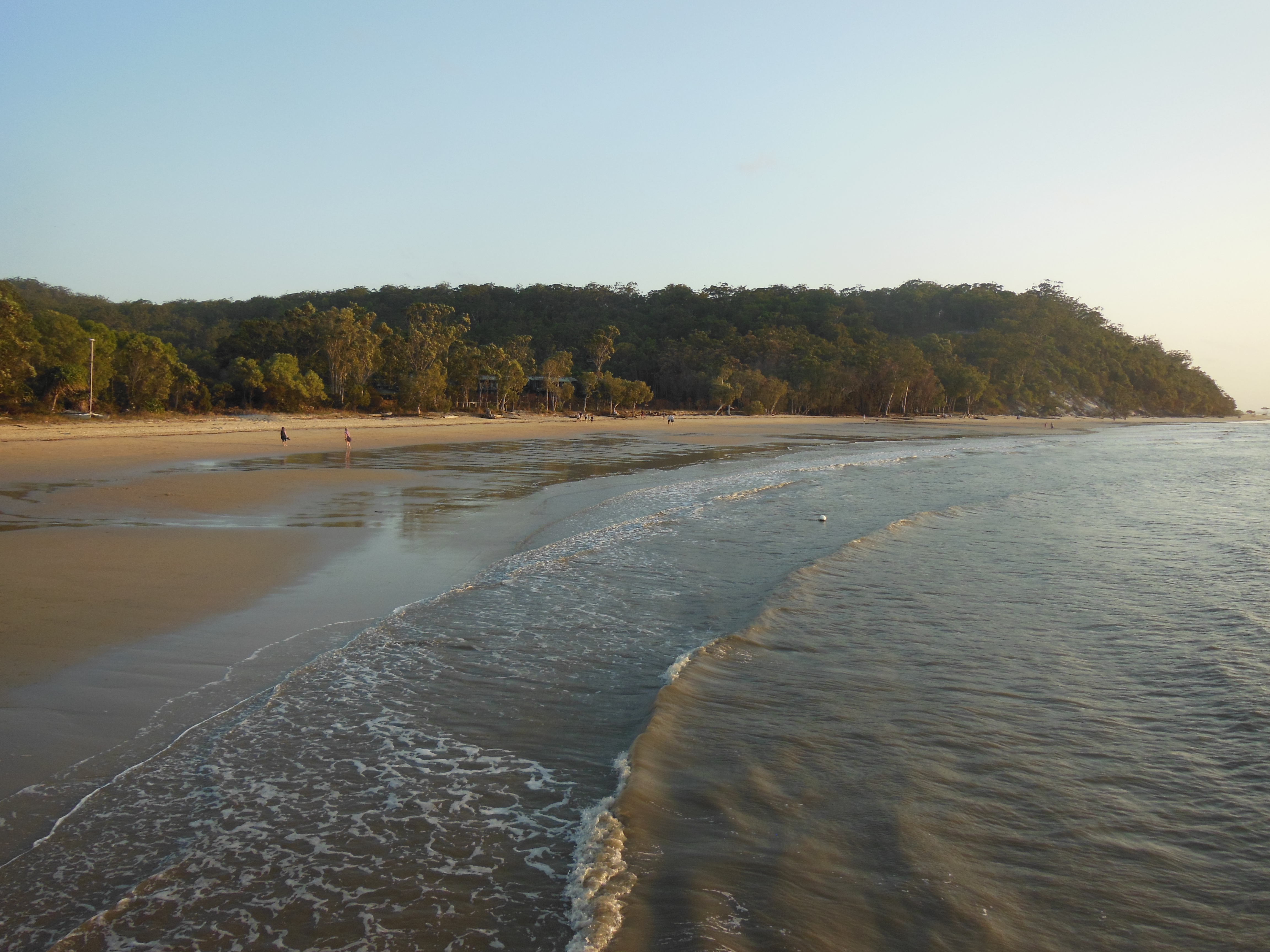
by Sarah Blinco | Sep 29, 2013 | Asia-Pacific, islands, Travel blogger destinations
The Great Sandy Adventure on Fraser Island
Whales, dingoes and Drop Bears, oh my!
“I hate that noise”, cried the 7-year-old in front of me, as another tree branch scraped past the vehicle’s long glass window; a sound akin to that of nails along a blackboard. The five Poms perched on the back seat were launched into the air again while the rest of us fastened our seatbelts and gripped whatever we could for balance. The ride through soft sand − surrounded by lush rainforest on either side − was surprisingly wild and bouncy, and we all giggled gleefully as we hit another curve in the road with speed. Our guide, Peter, had explained that in order to get through the sand, at various points, he had to take the track with some pace, but on a guarantee he is a very good driver (which indeed proved to be true) we put our faith in his expertise, sat back and indulged in the Fraser Explorer experience.
-TravelLiveLearn.com on YouTube with Sarah Blinco & Cooper Dawson
Fraser Island − situated about 300 kilometres from Brisbane; 123 kilometres in length and 22 kilometres at its widest point − was to me, that place I’d seen videos of, where 4WD vehicles race along sandy white beaches, fisherman rejoice in pristine conditions and dingoes roam through the tall old trees. It is also a location synonymous with whale watching in Spring, when mums and their new calves frolic for a while following their venture to − or birth amongst − the Great Barrier Reef and subsequent journey back down the eastern coast of Queensland towards Antarctica. Of course, I discovered on our brief sojourn in the area that all my preconceived notions were correct, but thanks to personal experience, I’ve gained a renewed interest in our local wildlife, intriguing plants and naturally beautiful landscapes.
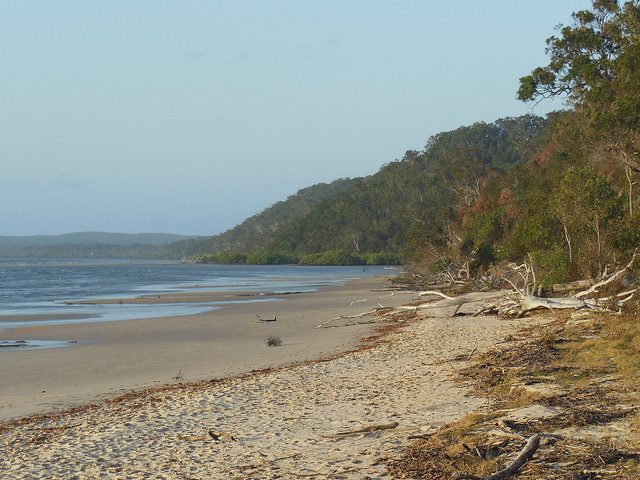
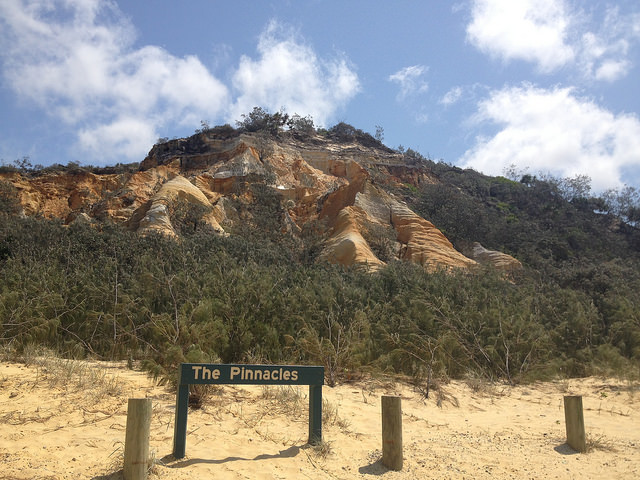
For a girl who has grown up in Queensland, I know surprisingly (perhaps shamefully) little about the bush, and I found learning about the rainforest’s unique plant and animal life here intriguing. As we travelled across Fraser Island as part of the Beauty Spots (day) Tour, I was fascinated to learn about this amazing World Heritage listed space − the largest sand island in the world, and the only one where rainforest sprouts from sand at elevations of 200 metres or more. The island’s World Heritage listing ranks it up there with Australia’s Uluru, Kakadu and the Great Barrier Reef, and its remarkable landscape is a masterpiece of long uninterrupted white beaches flanked by strikingly coloured sand cliffs, framed by azure ocean and coloured in by ancient green rainforest and crystal clear blue lakes.
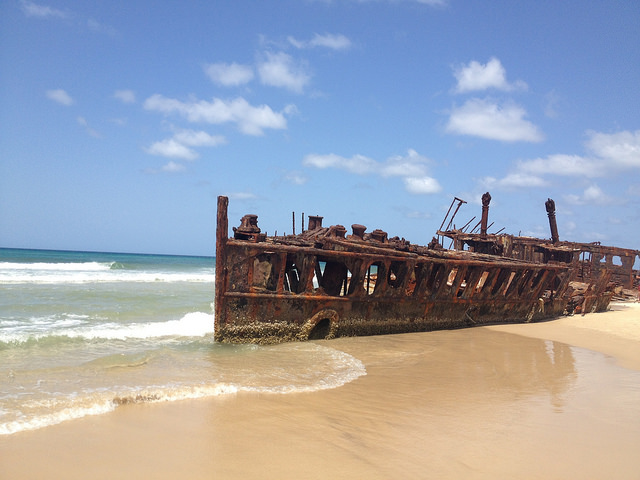
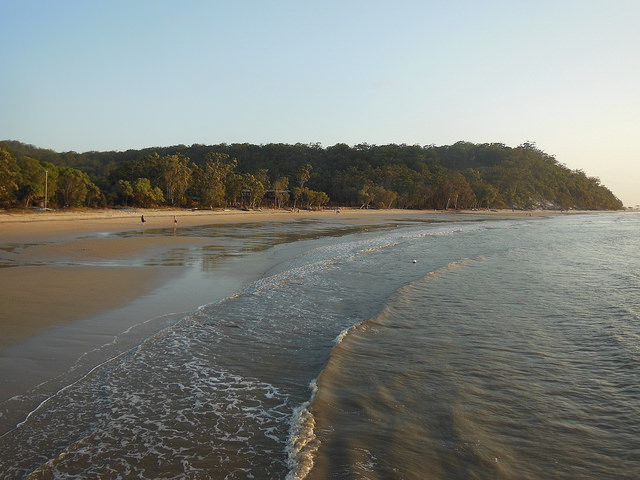
Peter our guide − also known as Peter Meyer, world-renowned photographer − openly offered us his wealth of knowledge gathered over 19 years. He told us stories of the savage 2011 bushfires that tore across this beautiful region, explaining the ramifications included the extra soft sand he was navigating, as well as where new plants were growing out of trees which is a heat-trauma reaction.
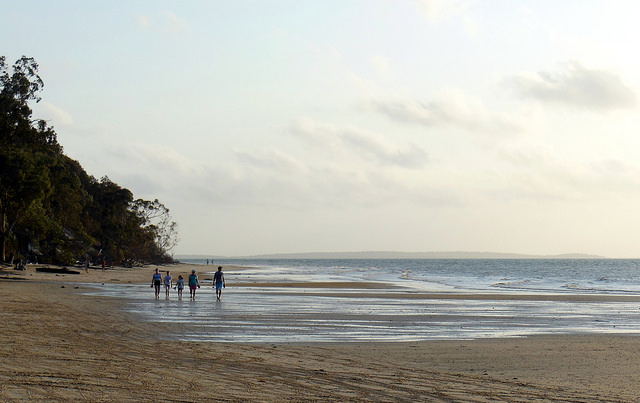
Peter pointed out native plants like Banksia (which I recognised from Mae Gibbs’ Snugglepot and Cuddlepie stories of my childhood), and showed us what happens to the plant following exposure to extreme heat; he explained how Eucalyptus trees emit a highly flammable gas, and also discussed theories as to why there are no koalas on the island, despite these Australian marsupials being common in similar terrain not too far away. Peter fondly recalled how he learns about the world through the eyes of his tour guests, and how once, a pair of Irish girls described Banksia as “hairy potatoes” or “a koala with its head tucked in”, and teased how sometimes it’s fun to see who can be convinced Drop Bears (the fictitious large evil relation to koalas, said to drop onto their prey from above) exist. Most importantly though, we learned that wombat poo comes out square. True!
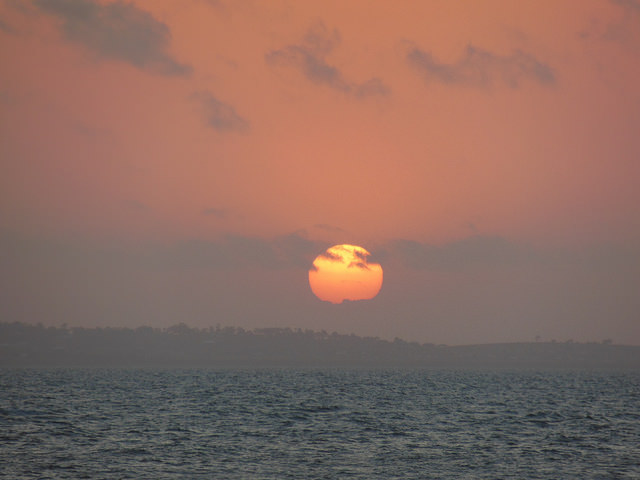
We were so enthralled by his stories we almost missed the landscape change: dense rainforest transitioning to broad sandy white beach stretching as far as the eye can see. As 4-wheel-drives whizzed past (at no more than 80km, I hope, as that’s the speed limit in these parts), we realised we’d hit the famous Seventy-Five Mile Beach, a sprawling oasis for fisherman, campers, kids and fun seekers. We stopped at Eli Creek, a freshwater stream where water pours out to sea from an inland spring at the rate of 4.2 million litres per hour, particularly popular during our visit (thanks to the school holidays) with kids on floating-tyres and European tourists enjoying a spot of revelry under the Aussie sun.
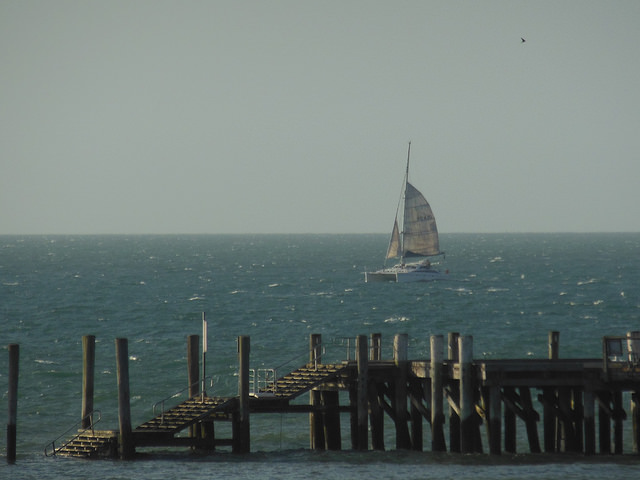
The group scoffed cookies and pastries for morning tea before venturing further along the sandy white to the Maheno shipwreck, an impressive structure that’s been beached here since 1935, and one of 23 shipwrecks recorded as having crashed upon Fraser Island’s beaches between 1850 and 1935. The Maheno was built in Scotland in 1904 and was the world’s first ever triple screw steamer, weighing a massive 5323 tonnes. Once a well-known trans-Tasman liner, as well as a hospital ship during World War 1, the ship was bought by a shipping company in Sydney after the war; later sold to Japan for spare parts. As the Japanese buyers were in the process of towing her to a new home, a powerful cyclone hit Queensland; subsequently the good old ship was separated from the vessel towing it, and ended up on its own course towards Fraser Island where it smashed onto this beach and has remained ever since. It’s a unique and thrilling site that makes for some lovely photos options (if you can hold until the tourists move out of the shot, that is).
Everyone was having a whale of a time on the tour, gradually appreciating the fact that here, there was no getting rid of sand − in your hair, shoes, clothes, bags − it’s all part of the experience. To make things even more exciting, as we cruised along the beach we noticed puffs of air emerging from the ocean followed by a massive fin splashing the water. Yep, you guessed it from the intended pun at the top of this paragraph: Majestic whales! Each year between June and November, the humpback whale migrates north from Antarctica to the warmer waters of our eastern Australian coastline. Interestingly, the term ‘humpback’ is derived from the motion these gentle giants make as they arch back out of the water in preparation for a dive. An adult usually ranges between 12 and 16 metres long and weighs around 36 tonnes, and a baby calf can weigh 700 kilograms when born. Sheesh − that’s a big baby! This area is perfect for whale watching at this time of year, although we did encounter unseasonably windy weather and our whale watching excursion has been postponed, so more on that up-close experience in a future post…
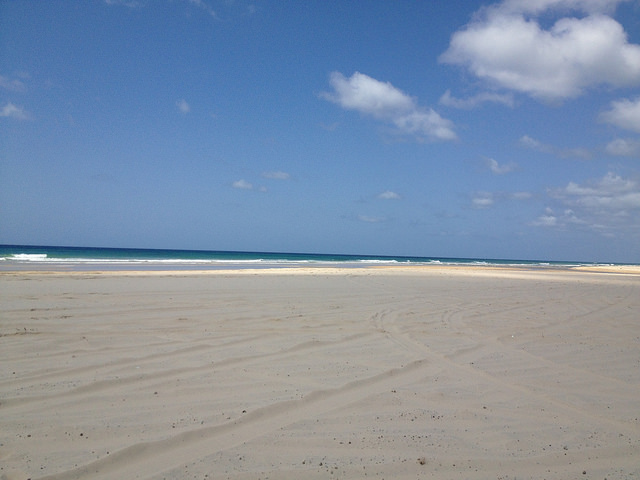
We ooh’d and ahh’d for a while before setting off for lunch. Along the way we discussed dingoes … and fate. Peter recalled how late one afternoon a tour he was leading came to an abrupt halt thanks to a flat tyre. As he went about fixing it, their party noticed four dingoes sauntering along the beach; three dingoes were stalking one little guy who obviously had ventured where he shouldn’t have been. Being an opportunist (as apparently is characteristic of dingoes), this one unfortunate soul ducked under the bus, taking shelter from the other three. This was a sight in itself, and those taking part in the tour soon forgot they had been delayed getting home. Eventually it came time to move on though, and naturally the vehicle revving to life gave the dingo a fright − so startled was he that he bolted across the sand to the shipwrecked Maheno and attempted to dive through one of the portholes. Only problem was, he got stuck! A wave came crashing through the bones of the old ship though and promptly pushed him back out, and he ran off, his ego bruised more than anything else. “A once-in-a-lifetime occurrence − that sequence of events will never happen again, and we saw it all because we had a flat,” beamed Peter.
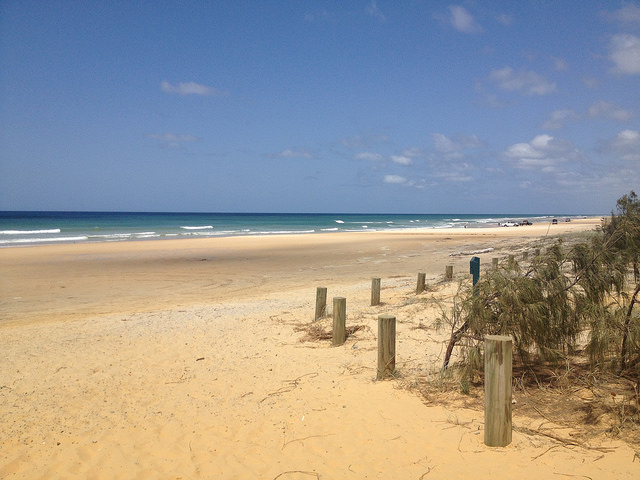
As the day moved forward we explored more of Fraser’s famous colourful sandy yellow and red-shaded landscapes, including the vast Pinnacles, discovering the whiter the sand, the older it is (a little like ageing hair). The red in the sands is essentially caused by iron that is rusting, and there’s a nice Aboriginal story I read that explains how these sands are lucky.
“Once a beautiful black maiden named Murrawar fell in love with the Rainbow who visited every evening. Burwilla, a bad man from a distant tribe, stole Murrawar for his slave wife. One day Murrawar ran away, and Burwilla followed her with his terrible killing Boomarang. She called for help and her faithful Rainbow raced across the sea. The wicked Boomerang attacked the brave Rainbow and they met with a roar like thunder. The Boomerang was killed, while the Rainbow was shattered into tiny pieces and lay on the beach. It is still there, its colours forming the hills along the beach here. Aboriginal women of many tribes, near and far, believe to obtain this sand or place it in your hair brings the Rainbow’s protection and good fortune”.
Lunch, a wander through ancient rainforest and a dip in the pure waters of Lake McKenzie capped off a truly beautiful and interesting day-tour.
Back at ‘home’ in our spacious, comfortable Kingfisher Bay Resort digs, we took a moment to recoup a little energy and enjoy the sublime bush-meets-ocean view from our veranda. We’d been urged to get to the beach by sunset to catch the dramatic mango-coloured beams of light reflect across the ocean and disappear into the night. We secured a little possie at the beachside Jetty Hut, ordered a glass of bubbles and a beer, and merrily soaked-up the spectacle; sail boats bobbed in the distance, foreign accents gossiped among us, and the segway tour group made its way back along the beach towards us as night fell.
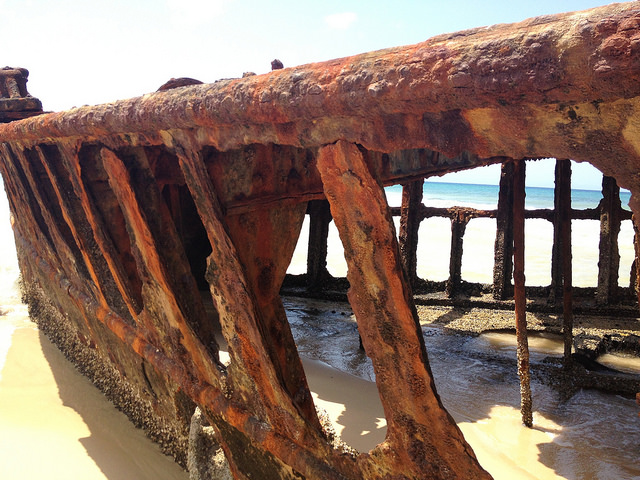
Kingfisher Bay Resort and Fraser Island is the ideal escape for those who want to get back to nature in the nicest, most comfortable way possible. The place certainly lives up to the name given to it by its original Aboriginal owners who called Fraser Island K’gari, which means ‘paradise’. The accommodation and facilities at Kingfisher Bay Resort are proudly sustainable and we thoroughly enjoyed everything about the resort.
YOUR TRIP │ OUR TIPS
Splurge
Kingfisher Natural Therapy day spa
So many relaxing ways to enjoy yourself. Why not indulge in an Holistic Massage, or a Refreshing Specialist Facial?
Souvenir
Peter Meyer is a world-renowned photographer who specialises in Fraser Island landscapes and life. His photography is on sale within the gallery in the village square. More at petermeyerphotography.com. We love his dingo on the beach series.
Tickled our fancy…
The fact that at Kingfisher Bay Resort you can choose to forgo room service for a day (or more) which in turn gives back to the environment. As a thank you for this, Kingfisher Bay Resort offers credits towards a spa treatment. Worth keeping your room clean and tidy independently, right?
Additionally, there’s a plethora of activities to entertain and inform couples, families and groups, from nature walks to guided tours; resort fun and beach/ocean activities. Read more at kingfisherbay.com/fraser-island-activities.
Eat + Drink
The most difficult part about this experience is choosing where to go. Maheno Restaurant offers a divine seafood buffet experience, while The Sand Bar provides a contemporary pub feed and great music. Seabelle Restaurant is just lovely! And you can’t go past the Jetty Bar at sunset for a cold drink, cheese or prawn platters. Then there’s the Dingo Bar for those who want to party on with other travellers (and a sprinkling of fun international guests) – it’s a hidden treasure that you can catch a free shuttle to after dark and into the wee hours.
Naturally beautiful
Whales (September and October), birds, dingoes, wildlife and a delightful, natural, sustainable experience − really, we were sad to leave Kingfisher Bay Resort, can’t wait to go back.
About Kingfisher Bay Resort
152 room resort including hotel rooms, self-contained villas and holiday homes. Gateway to World Heritage Listed Fraser Island. Read more kingfisherbay.com.
Getting there
We flew to Hervey Bay from Brisbane, transferred a few minutes up the road from the airport to River Heads, and caught a ferry across to Fraser Island. There are plenty of options however. Visit kingfisherbay.com for full details.
Love travel? Come chat to us on FACEBOOK or TWITTER X
by Sarah Blinco | Sep 2, 2013 | Asia-Pacific, Cool hotels, Travel blogger destinations
The best of boutique hotels: For accommodation that’s inspiring and surprising (and a little left-of-centre in all the right ways), check out – or check into – Brisbane’s Urban Hotel. Situated at the highest point of the city, this stylish hotel is nestled in a gorgeous little pocket overlooking the CBD and within walking distance to lush parks, cafes, transport and a variety of convenience options.
Take a one-minute tour with me…
The mantra here is to offer guests ‘surprises’, and on this promise, Hotel Urban certainly delivers. We’re not the only ones who think so either, as this hotel recently scored a Trip Advisor Travellers’ Choice Award and the Best Superior Hotel (4 to 4.5 Stars) accolade at the Queensland Hotel Awards.
The lobby − aka Moët Rosé Lounge − showcases alluring art, elegant seating and Hollywoodesque decor, as well as designer fragrances which you’re free spritz for a post-travel pick-me-up. Rooms are spacious and fitted with contemporary luxuries like Nespresso pod machines, iPod docking stations, flat-screen televisions, quality interiors, and include comfy Slow Down slippers, plush bathrobes, and the signature Urban Snorer specially crafted underlay, snug duvet and feather pillows. There is a range of rooms on offer, including suites with enormous balconies and sweeping city views, as well as pool-side villas named after Australia’s most famous beaches. In fact, the pool-side accommodation is ideal for groups travelling to Brisbane, because the sophisticated outdoor area beyond these rooms features private cabanas, sun-chairs and landscaping that will have you and your entourage channelling the glamorous lives of Footballers’ Wives in no time. There’s a gym (‘jim’), in-room massage available, funny and friendly staff, arty and colourful public spaces ideal for reading or a quiet chat with friends, and even an amazing private rooftop nightclub, meeting and conference rooms for those interested in reserving special-event facilities.
The Gazebo Bar & Restaurant on-site is not only where delicious meals may be devoured, drinks consumed and live entertainment enjoyed on Friday nights, but friends are likely to be made too! It’s an informal yet sassy gathering-place that at any given time brings forward a mix of accents and interesting folk. If however, you’re alone at the end of the day, Suzanne the cuddle-pole has been thoughtfully positioned so you’ve got ‘someone’ to lean on as darkness falls. Or, if you’re lucky like me, you might score one of the hotel brand’s signature soft-toy monkeys to keep as a memento of a truly lovely, unique, stylish, incredibly cool facility that offers so much more than just a bed for the night. Press play on the video above to see all of this in a one-minute walk-thru.
Hotel Urban, 345 Wickham Terrace, Brisbane │ +61 7 3831 6177

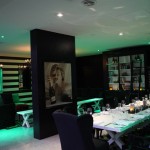
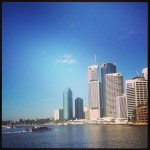
Has a hotel ever exceeded your expectations? Share with us on FACEBOOK or TWITTER x
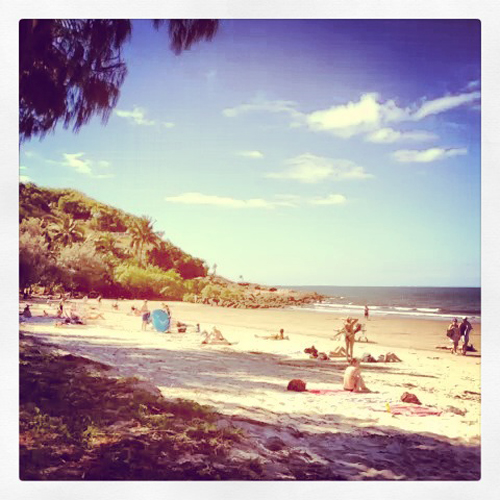
by Sarah Blinco | Aug 11, 2013 | Asia-Pacific, Travel blogger destinations
Don’t you think it’s time you travelled to tropical North Queensland?
Port Douglas is a sublime beach-side location about an hour’s drive from Cairns and the drive between the two ports has to be one of the most scenic in Australia.
–
–
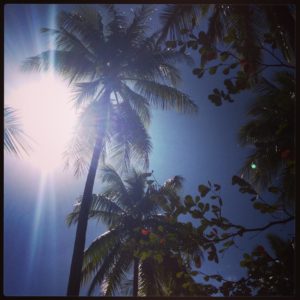
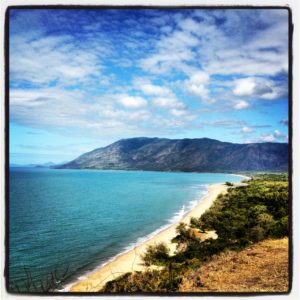
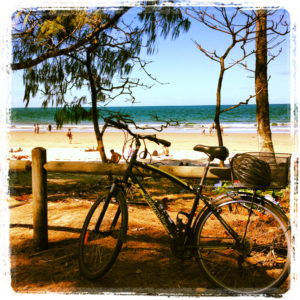
Read more on Port Douglas.
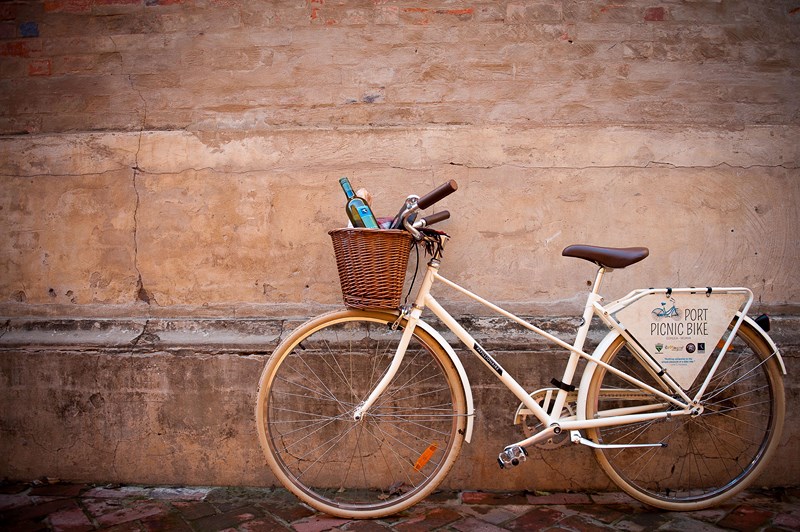
by Sarah Blinco | Jul 24, 2013 | Asia-Pacific, Travel blogger destinations
Located on the banks of the mighty Murray River (Australia), the twin towns of Echuca Moama are the closest point of the Murray to Melbourne. Echuca Moama is known as Australia’s Paddlesteamer Capital and the region is gorgeous to visit because it represents not only a bygone era with horse-drawn carriages and blacksmiths, but also showcases all the travel and touring conveniences of modern times.
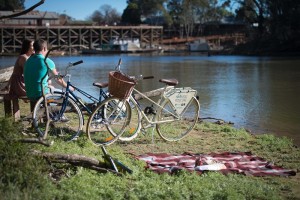
News just in to TravelLiveLearn.com is that visitors to Echuca Moama can now enjoy exploring the region on two wheels – for free! With the Port Picnic Bike you can take advantage of the region’s flat topography (this area boasts some of the best off-road cycling and bike tours in Victoria), sunny climate and plentiful supply of open spaces.
Free of charge, you are invited to tour the area and visit the likes of St Anne’s Cellar Store, Echuca Farmhouse cheese, picnic spots and the Echuca Moama visitors centre in your own time.
Choose to collect a variety of wine, cheeses and other products in Echuca Moama whilst also taking the opportunity to experience, film and photograph (though probably not the latter two while riding) picturesque, classic Australian landscapes: bushland, river, historical sites and more.
Just imagine travelling here for a writer’s / creative retreat, or romantic break-away. Anyone remember All the Rivers Run?! … See you there x
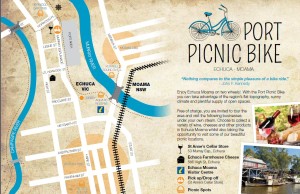
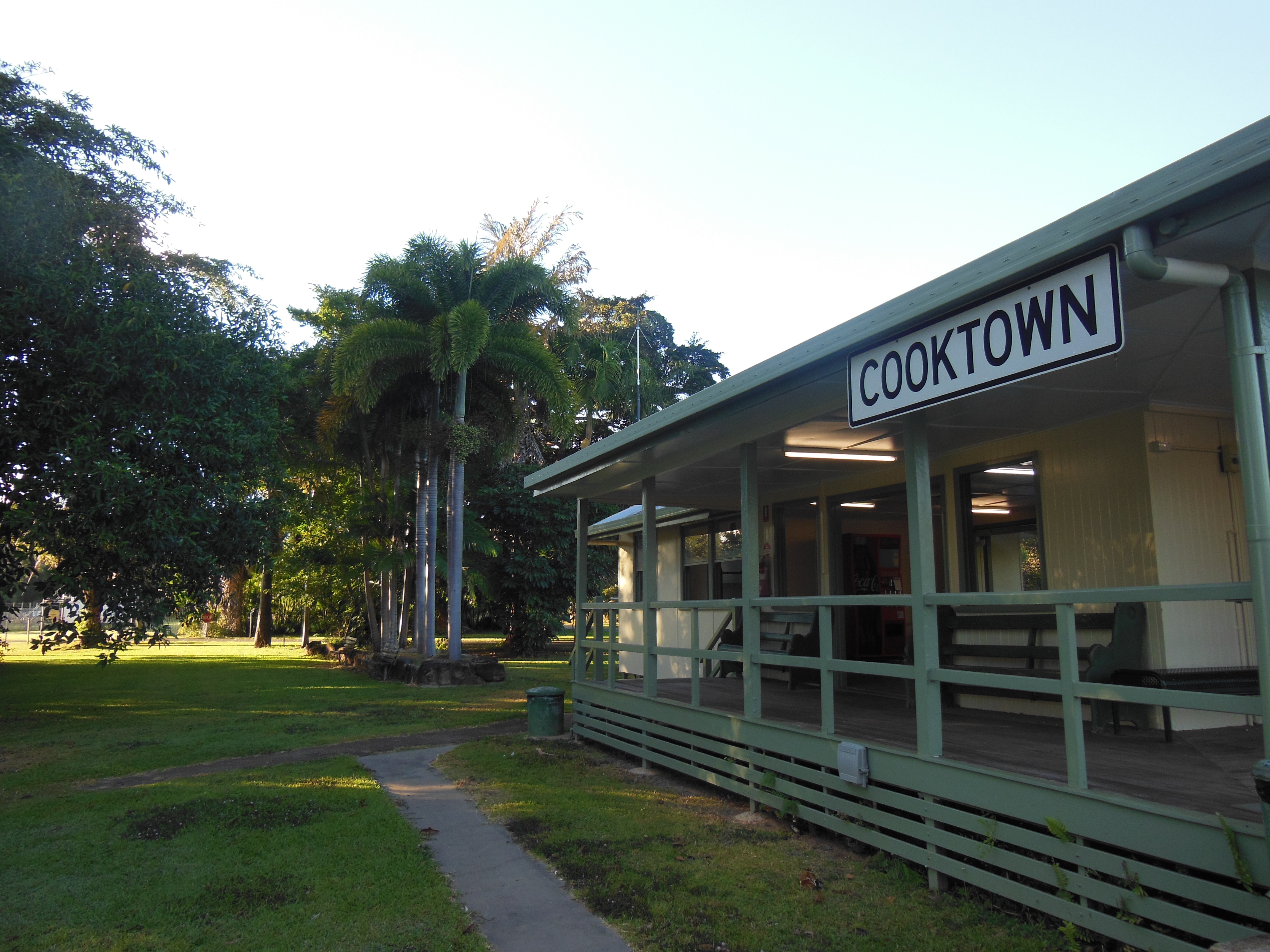
by Sarah Blinco | Jul 5, 2013 | Asia-Pacific, Travel blogger destinations, Travel vlog
Cooktown is one of those unique places in the world brimming with truly colourful characters from all walks of life. A quintessentially Aussie town of 2000 people and a destination of unspoilt beauty; here you may discover the very best of Australia’s coast, rainforest, bush, savannah and desert landscapes, which remain largely unchanged since the days when Captain Cook and his crew from England first spotted land.
From country folk donning Akubras, and the Indigenous locals proudly showing visitors around their traditional lands, to those who have migrated far north for a break from high-powered city lives, and bar staff with their thick Scottish accents − everyone’s got a story and they’re happy to tell it (or listen to yours). It’s difficult to resist conjuring romantic notions of living in a place like this, A Country Practice style (Aussie TV throwback reference!), as Cooper and I do consider little towns like Cooktown with much affection.
WHERE TO STAY – TRAVEL IN COOKTOWN
It’s actually mind boggling to discover that a little town in the far northern reaches of Australia might offer such delightful facilities, and the Sovereign Resort Hotel far surpassed our expectations. I mean, it looks lovely on the website − and honestly, it’s just as nice, if not nicer! There’s a shuttle service to and from the airport, the prices are great, inexpensive car hire available on-site, accommodation options are available depending on your needs, staff (particularly Sally) are absolutely lovely, rooms clean and spacious, restaurant divine, pool is perfect and you couldn’t ask for a more convenient (or pretty) location in the centre of town. Highly recommended, would stay here again without hesitation. Book online: Sovereign Resort Hotel
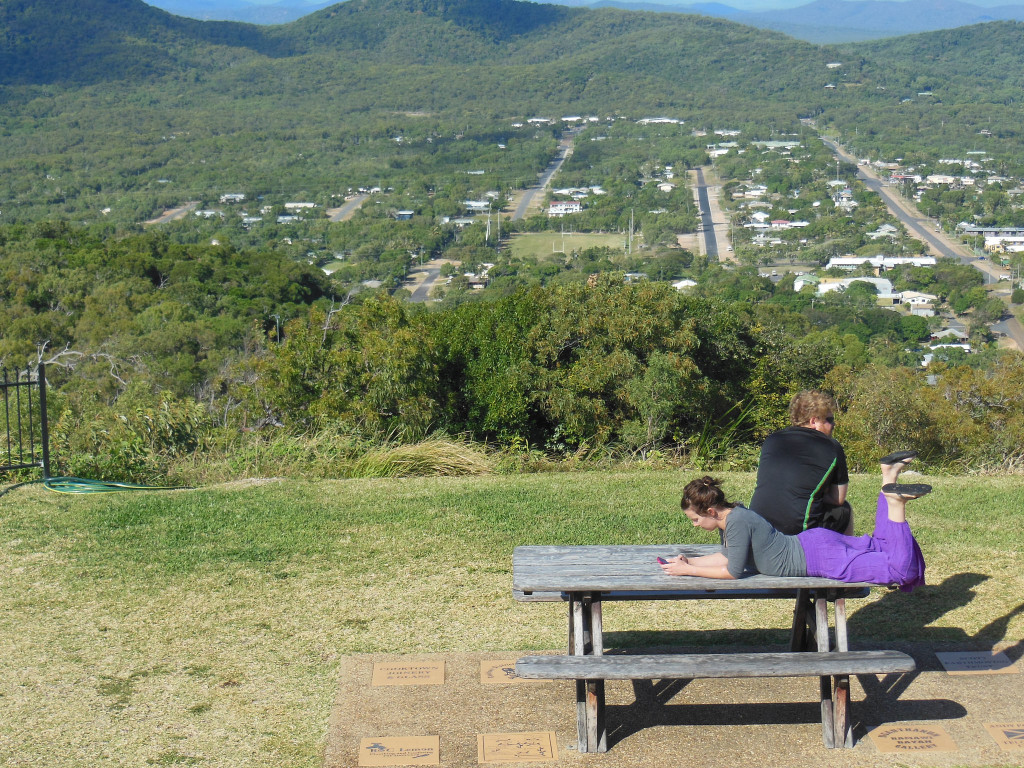
While it’s the traditional town-Down Under experience you’ll enjoy in Cooktown, what may surprise you is the interesting history that seeps into every street corner, along the waterfront, trailing up and down mountainsides, throughout pubs, the post office and port. Cooktown has endured its ups and downs in terms of boom-times, but will forever maintain a critical position in Australia’s story.
In 1770, as the traditional owners of the land, the Guugu Yimidhirr people, watched on with trepidation, Lieutenant James Cook and his crew ran their ship, Endeavour, aground. They had discovered Botany Bay in New South Wales (April 1770), and Seventeen Seventy in Queensland (May 1770) but on the way up towards Australia’s tip, the Great Barrier Reef seriously damaged the hull of the ship, and they had to stop here for 48 days (the longest onshore stay of this particular voyage of discovery). Cook named only one river in Australia, that being the Endeavour here in Cooktown, after the vessel his crew were able to save in these parts. Of course, he returned home to England and Australia would later be officially founded by Captain Arthur Phillip in 1788, but Cooktown was already firmly plotted on early maps of Australia by then.
The settlement gradually flourished and just under 100 years on, Cooktown was in fact the second most thriving town in Queensland with one of the busiest ports, all due to the Palmer River Gold Rush (1873). Stores, pubs, banks, gambling and even opium dens were flourishing in town, while 15,000 miners (10,000 being Chinese) prospected for gold along the banks of the Endeavour. Several buildings, many treasured artefacts, and most likely a few ghosts, remain here from that colourful period.
The Gold ‘rush’ was just that, a fleeting period in time which would indeed come to an end, leaving the future of Cooktown hanging delicately by a thread. I recently discovered a Sydney Morning Herald article from 1 November 1941 where the journalist, Hugh Henry, described the then “Ghost town of the North”:
“… A ramshackle wharf now seldom visited by large steamers; a dilapidated township with fine public buildings fast falling into decay, while hotels alone continue to do a thriving business; and a signal-station hill commanding one of the loveliest river views in Australia a wide estuary of sapphire gleaming under a sky of kingfisher blue. That is Cooktown today. Australia is a young country and it is natural to think of its history as one of uninterrupted progress. But no traveller can go far in Australia without being impressed by the number of towns with a record of past prosperity, and a present so deteriorated that it is difficult to establish any connection between them as they have been and as they are. Among Australia’s ghost towns Cooktown, on the far north coast of Queensland, occupies a prominent position. Tile residents of Cooktown reject any suggestion that their native place is dead, but in the next breath they are eager to discuss ways and means of resurrection.”
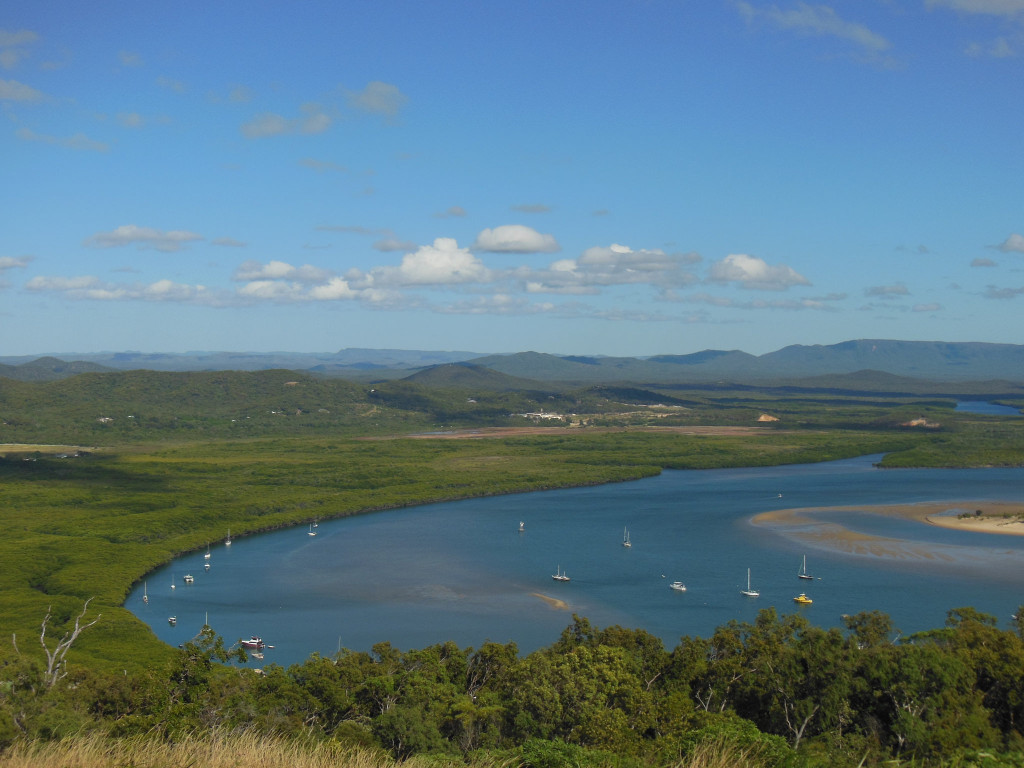
While Cooktown isn’t home to as many as its hey-day of the late 1800s, it does boast a friendly population of interesting people from all over the world, and indeed is a delightful place to visit. There’s a grand old building resembling an American plantation home on the main strip that’s for lease − I’m in love with it! Various glorious old structures are located around town, and make for a refreshing change to the mundane contemporary constructions that saturate most contemporary Australian locations. Equally beautiful is what Mother Nature has blessed this part of the world with − sublime coastline, divine hill-top views and inspiring landscapes as far as the eye can see.
I could literally go on and on about how many travel and recreational options there are on offer here, and as we’ve mentioned in our video coverage of the town, we’ve only just scratched the surface. It’s certainly a little place with not only a big heart, but history and adventure to boot. However, in pursuit of learning, combined with travel, here’s a few things we’d suggest you keep an eye out for:
GETTING TO COOKTOWN
Honestly, one of the top reasons to travel in Cooktown and around top end in the first place is for the opportunity to fly with Hinterland Aviation. The team (both in Cairns and Cooktown) are friendly, professional and fun. There’s free WiFi in the Cairns terminal, plenty of flight options per week to choose from, and while you can drive to Cooktown in around three hours, this service is convenient, easy and value for money. The scenery between Cairns and Cooktown is awe-inspiring, and seeing it from this vantage point − through the sizeable windows of a comfortable charter plane − is really a once-in-a-lifetime experience, and should be on everyone’s bucket-list. More at: Hinterland Aviation
Just 45 minutes, scenic flight − it’s flexible, convenient, great value and private − save time, energy and enjoy the landscape in a way that showcases its ultimate beauty− from above!
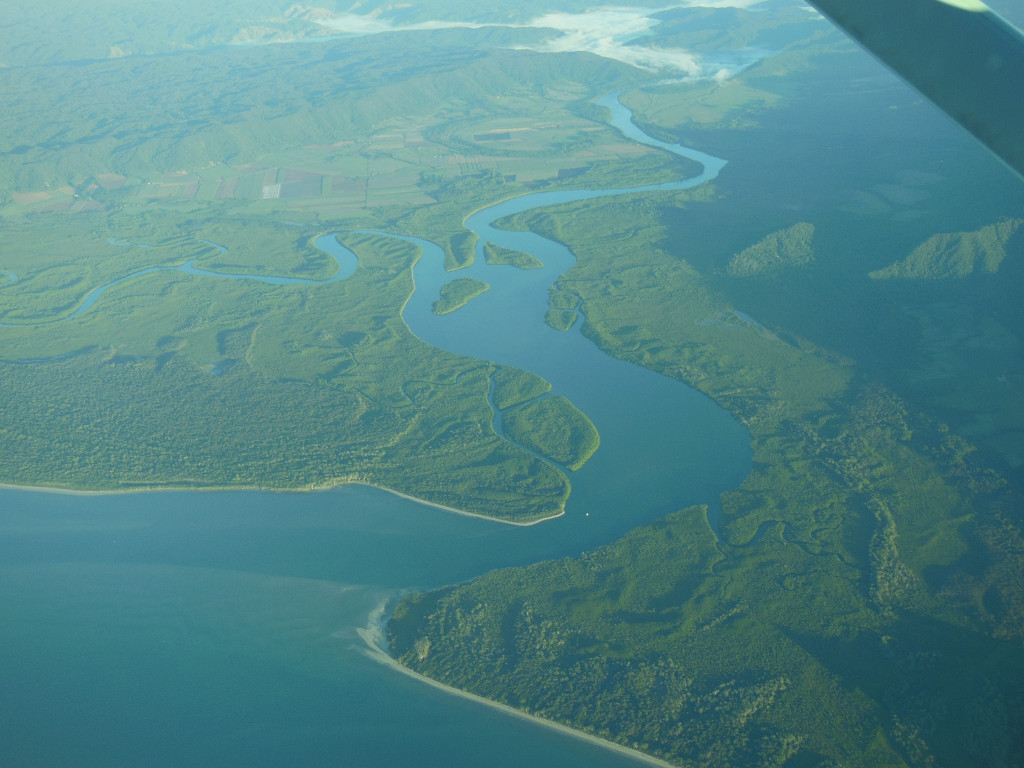
James Cook Museum
Being one of Australia’s most historical townships you’ll find many displays and places to visit to learn about Cooktown’s past. Some of the town’s old colonial buildings can still be seen today and walking down Charlotte Street you’ll note great examples including the old bank building built in 1891 for the Queensland National Bank, the Post Office (1887), The Daintree Divisional Board Council Hall, now the RSL (1885), Jackey Jackey Store Building, now a café (1886), The Sovereign Hotel, now The Sovereign Resort (1874), and Seagren’s Store, now Seagren’s Inn (1880). Additionally you’ll not want to miss the beautifully restored convent building and a former boarding school for girls, now home to the James Cook Museum on Helen Street. Built in 1889, it features displays of an anchor and cannon from the ship Endeavour, some of Captain Cook’s diary extracts, and fascinating stories about life in early Cooktown. Entry is $10 (adults).
If you enjoy this museum and its historical offerings, you may also be interested to take a look at The History Centre on Charlotte Street (opposite The Sovereign Resort Hotel) which currently houses the Cooktown and District Historical Society, award-winning interpretive historical displays, and family research facility. Entry is $5 (adults).
Love old photos? Here are some fascinating images from old Cooktown.
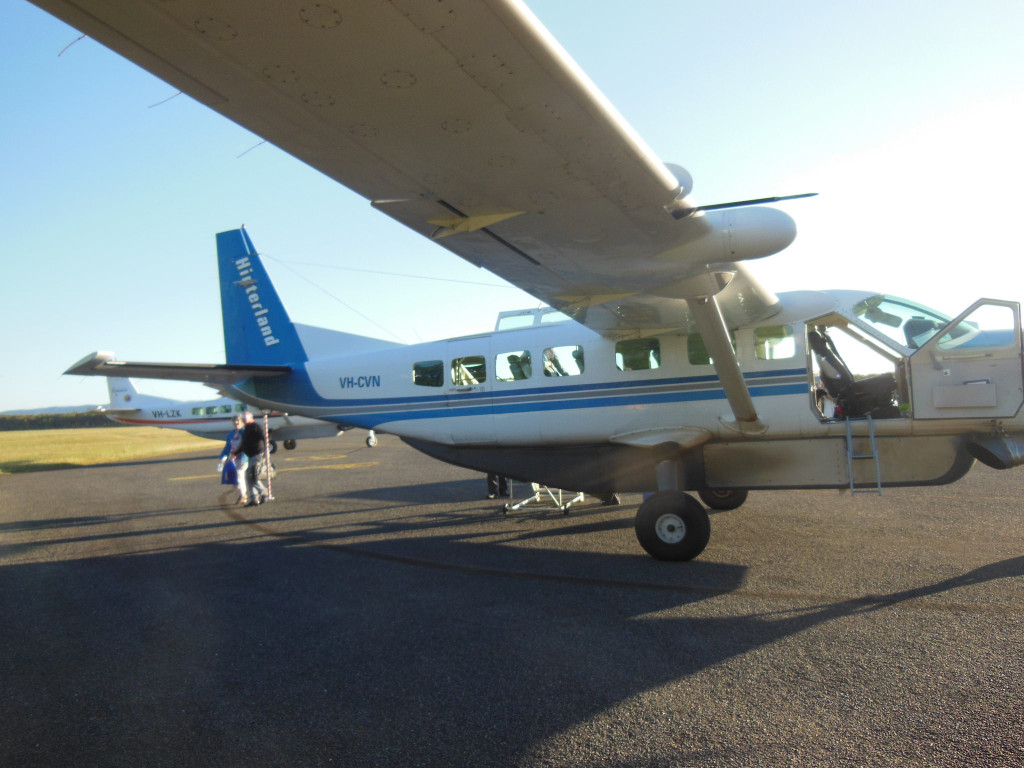
Grassy Hill
The lookout on Grassy Hill with its 360 degree views of Cooktown, coastline, inlet and the sprawling hills in the distance is one of the area’s most popular attractions. The landscape seen today from the top of the hill has changed little since Cook and the crew of the Endeavour climbed Grassy Hill in 1770 to view the surrounding reefs. To most of us, Queensland’s Great Barrier Reef is famous, attracting tourists from all over the world. But to Cook and his crew it would have presented a real danger. From this vantage point, Cook would have been able to plot a safe course through the dangerous reefs to get the crew safely on their way back towards home.
The Cook Monument
Cooktown is rich in history and the Cook Monument commemorates Lieutenant James Cook’s landing on 17 June 1770. It was on this location the local Aborigines would have watched with caution and curiosity as the crew beached his ship the Endeavour, tethering it to a tree after its wooden hull was damaged on the reef south of Cooktown. It’s been told that because white people had never been seen before, the Aborigines thought Cook’s crew were ghosts! Interesting note: It was during this time that botanist, Joseph Banks, wrote the first European description of a kangaroo. How unique Australia must have seemed!
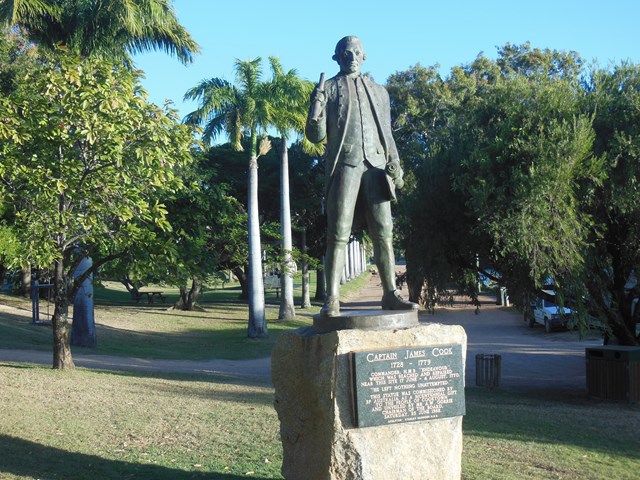
Cooktown Lighthouse
Cooktown Lighthouse on Grassy Hill was built in England and shipped to Cooktown, in 1885 to guide ships through the reef. Back then, Cook would have been very impressed by this technology!
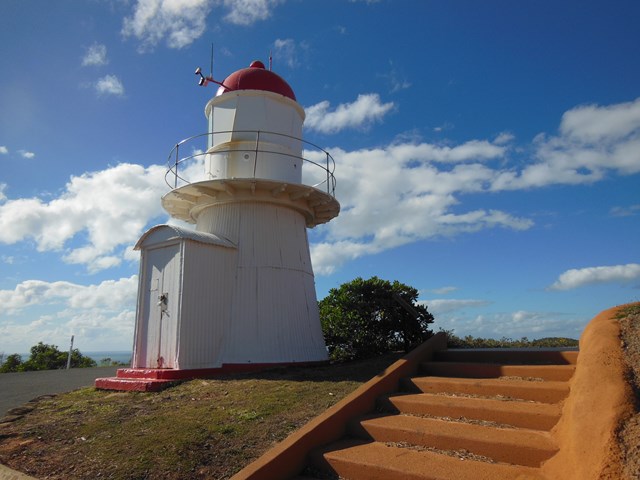
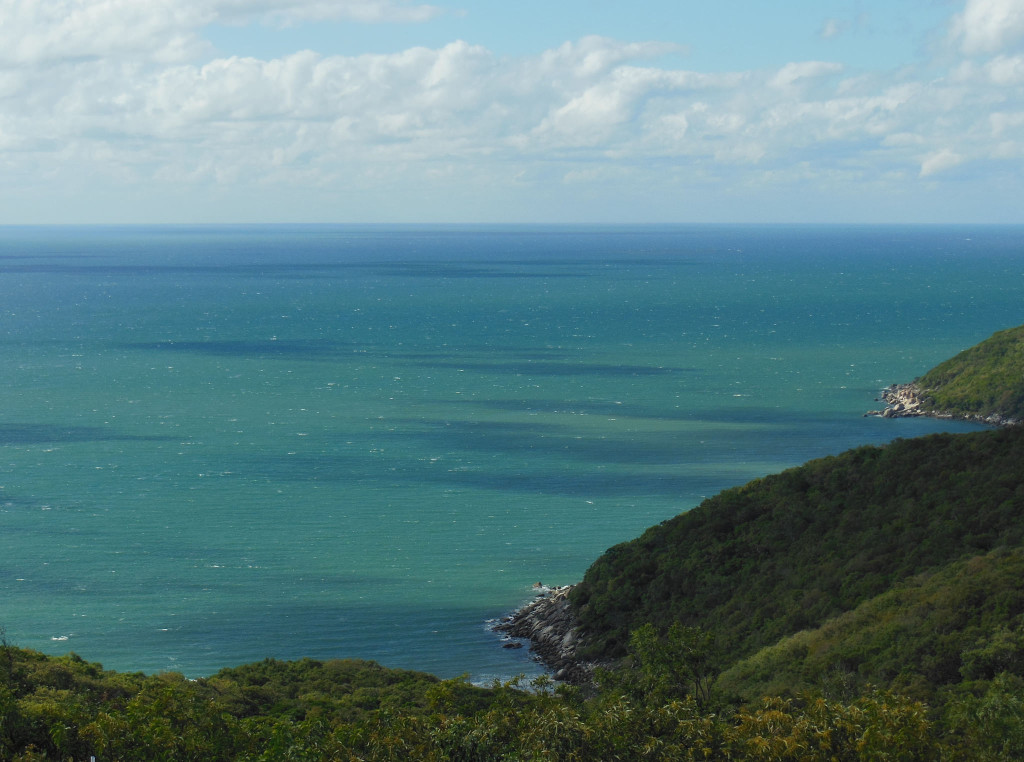
Nature’s Powerhouse + Botanical Gardens
A two-minute drive from the town centre is the indoor Nature’s Powerhouse and historic Botanical Gardens. The Nature’s Powerhouse contains a stunning collection of works by local artists with a very strong emphasis on plants. The Botanical Gardens have a long history and were first established in 1878, only five years after Cooktown was established, and feature many of the plants used by the local Aboriginal people in their daily lives then and now. Many of the plant species were completely new to botanist Joseph Banks, who accompanied James Cook on The Endeavour and returned home to England with exciting clippings to study.
The Queen’s Steps
The Queen’s Steps were made for HM Queen Elizabeth II for her visit to Cooktown in 1970 to open the James Cook Museum, part of a yearlong celebration marking 200 years since Captain James Cook’s remarkable voyage of discovery.
The Cemetery and Chinese Shrine
The Cooktown Cemetery and Chinese Shrine is just outside the centre of town, and offers insight into how tough life would have been for the early pioneers. The styles of graves indicate religious groupings but surprisingly there is a virtual absence of Chinese and Aboriginal graves, despite burials of both peoples being recorded. Many of the events and individuals that contributed to Cooktown’s development are remembered however; and keep an eye out for notable old graves, like that of the oldest identifiable burial place, of Rev Francis Tripp who died on the 20 May 1874 at the age of 46.
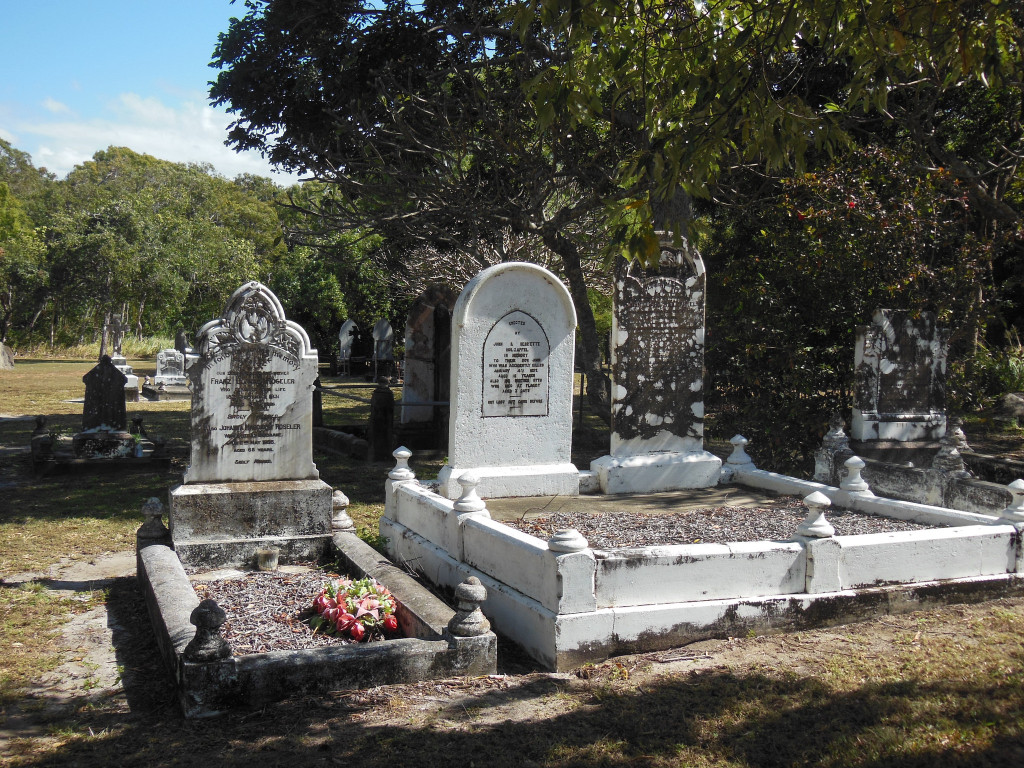
The Powder Magazine Building
The Powder Magazine Building was built in 1874 to store explosives. It is thought to be the first brick building constructed on Cape York Peninsula. Interestingly, no nails were used in the building in order to prevent sparks when barrels of gunpowder were being moved.
The Milbi Wall
A unique attraction in Cooktown is the Milbi Wall, a one metre high curving wall, around 12 metres in length, made of hundreds of ceramic tiles and divided into three sections, each telling history from an Aboriginal perspective.
- •The first tells the stories of the creation of the Cooktown area (sometimes called Dreamtime stories), and is important to the culture of the first Australians.
- The second section of the wall represents first contact with Europeans.
- The third section centres on the 1967 Australian Constitutional referendum, when the Australian people voted to give Aboriginal and Torres Strait people full equality, including voting rights.
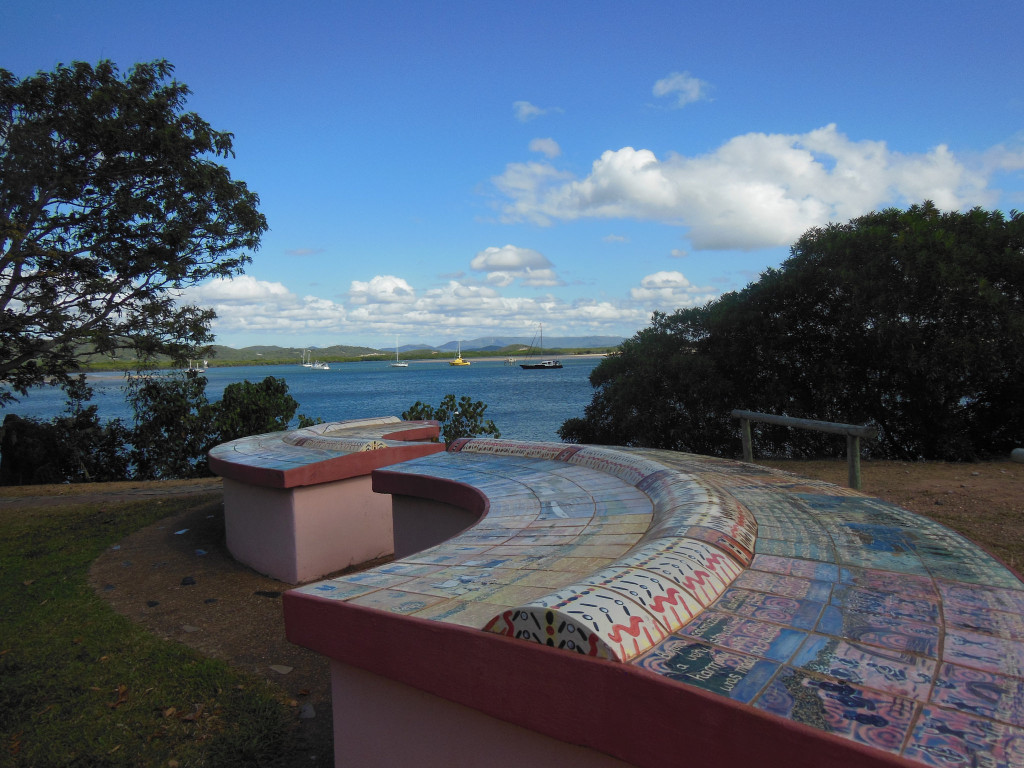
Fisherman’s Wharf
A beautiful spot for a stroll, fishing or even some alone contemplation-time. This was once, during the Gold Rush, one of the busiest ports in Queensland. It’s also the starting point of the River of Life Walkway which meanders through parklands to the Post Office, with plaques dotted along the way explaining the stories behind the historic sites you on your path.
There’s a handy WELCOME TO COOKTOWN map which you will find at information centres and hotels/motels which outlines these landmarks and more, making a driving or walking tour of the town easy and fun, ensuring you don’t miss a thing.
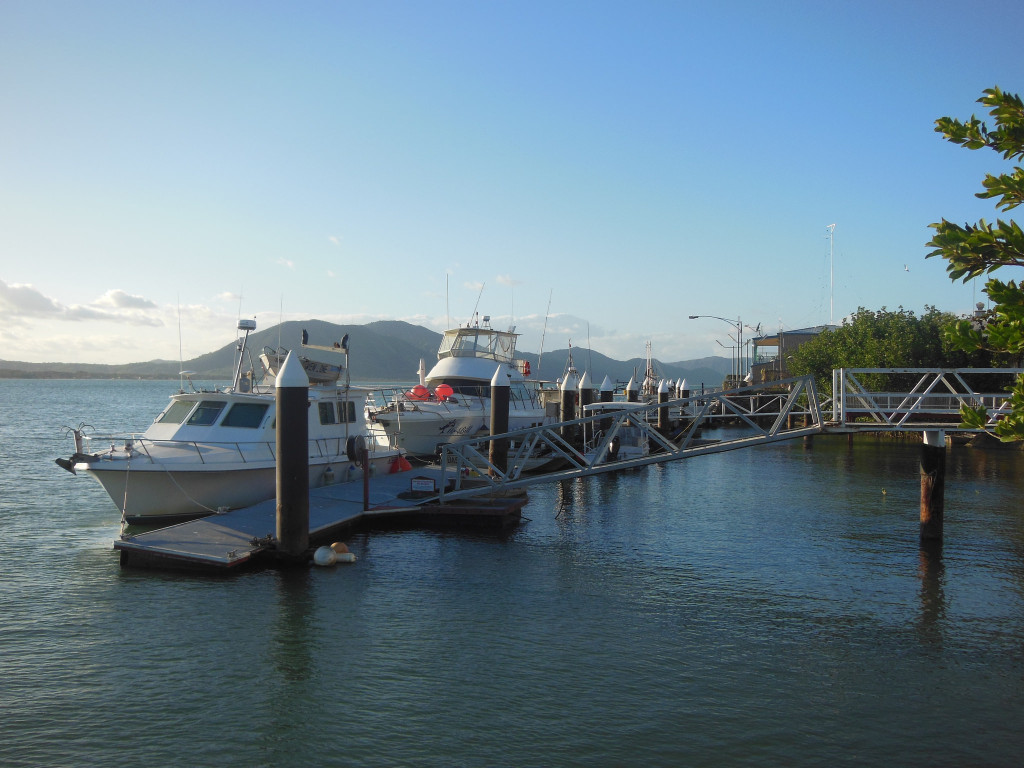
There are also copious tour options on offer in the area which take visitors on excursions to surrounding coast and bushland, for more history, fishing, hiking, swimming, driving, animal-spotting, Reef adventures and more. One of the most renowned and popular options leaving from Cooktown is award-winning Guurrbi Aboriginal Tours, which takes guests on a magical tour through surrounding lands, exploring life as it was and discovering ancestral rock art sites, lead by Willie, the traditional story-keeper of the Nugal-warra clan. As one guest has said on their website, the excursion is, “An amazing journey of story and dreaming, birthing and beginning”.
Cooktown is a great place to snorkel, fish, spot a crocodile, explore the Outback or just relax. Pristine beaches, incredible mountain views, cascading waterfalls, and excellent fishing are just some of the wonderful experiences to be enjoyed in this region. More information: TourismCapeYork.com
Travel essentials
In Cooktown you’ll find everything you need for a break away. There’s a pharmacy, newsagent, IGA supermarket, plenty of pubs and cafe options, take-away and huge bakery offering breakfast options and delicious Chinese dishes for lunch.
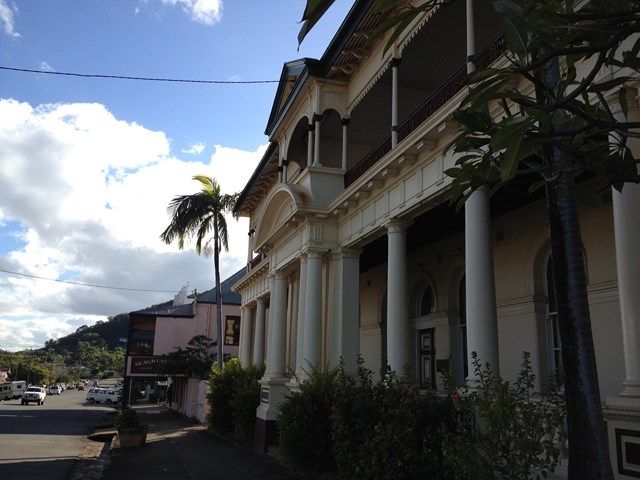
Have you been to Cooktown or any awesome little Aussie spots? Share your adventure and travel tips with us on FACEBOOK and TWITTER.

 The last time I was in Sydney I mentioned on Facebook that I’d enjoyed the best meal of my life. A number of people have since asked if I was joking, but actually no, I was totally serious.
The last time I was in Sydney I mentioned on Facebook that I’d enjoyed the best meal of my life. A number of people have since asked if I was joking, but actually no, I was totally serious. At Verde Restaurant Sydney however, because we had arrived just prior to the evening rush, we had the pleasure of chatting to Antonio Ruggerino, owner and head chef (pictured below), who insisted we try it his way. Antonio is one of those truly passionate Italians who is as enthusiastic about food as he is knowledgeable.
At Verde Restaurant Sydney however, because we had arrived just prior to the evening rush, we had the pleasure of chatting to Antonio Ruggerino, owner and head chef (pictured below), who insisted we try it his way. Antonio is one of those truly passionate Italians who is as enthusiastic about food as he is knowledgeable. As we enjoyed a divine glass of sparkling wine, we eagerly anticipated what would emerge first. A large plate brimming with samples predominantly from the entrée menu appeared in no time. Take a look at the menu HERE, and as your mouth waters, let me assure you these taste even better than they sound.
As we enjoyed a divine glass of sparkling wine, we eagerly anticipated what would emerge first. A large plate brimming with samples predominantly from the entrée menu appeared in no time. Take a look at the menu HERE, and as your mouth waters, let me assure you these taste even better than they sound. Then came a round of options from the mains menu. The Gnocchi (home made), Mozzarella di Buffalo, parsley, Tomato Sugo was to die for – a delicious explosion of tomato and cheese flavours and alluring textures. I had to be restrained from licking my plate. We also tried Confit of Duck Leg with herb Gnocchi, Caramelised Balsamic Pear which to our absolute shock, we loved. We’re not really big fans of duck, but this meat was tender and not gamey at all, and the pear’s sweetness was a perfect accompaniment to the other flavours emanating from this course. Like everything he gave us, this was plate-lickingly good!
Then came a round of options from the mains menu. The Gnocchi (home made), Mozzarella di Buffalo, parsley, Tomato Sugo was to die for – a delicious explosion of tomato and cheese flavours and alluring textures. I had to be restrained from licking my plate. We also tried Confit of Duck Leg with herb Gnocchi, Caramelised Balsamic Pear which to our absolute shock, we loved. We’re not really big fans of duck, but this meat was tender and not gamey at all, and the pear’s sweetness was a perfect accompaniment to the other flavours emanating from this course. Like everything he gave us, this was plate-lickingly good! The reason this all came about, is because Antonio prides himself on being a master of selecting cuisine he instinctively knows diners will love, but that we wouldn’t order for ourselves. It’s disappointing to him that people miss out on these kinds of experiences, so much so he is now encouraging diners to let he and his team take charge. Don’t worry about decision making – entrust your experience to him, and for a fraction of the price of a traditional degustation menu, anyone can put Antonio’s skills to the test – and you really should, because we bet you’ll be surprised and delighted every time. Drop into Verde, tell Antonio what you or any of your party don’t eat, and he’ll then serve you the best meal of your life. Simple and delicious.
The reason this all came about, is because Antonio prides himself on being a master of selecting cuisine he instinctively knows diners will love, but that we wouldn’t order for ourselves. It’s disappointing to him that people miss out on these kinds of experiences, so much so he is now encouraging diners to let he and his team take charge. Don’t worry about decision making – entrust your experience to him, and for a fraction of the price of a traditional degustation menu, anyone can put Antonio’s skills to the test – and you really should, because we bet you’ll be surprised and delighted every time. Drop into Verde, tell Antonio what you or any of your party don’t eat, and he’ll then serve you the best meal of your life. Simple and delicious.

































